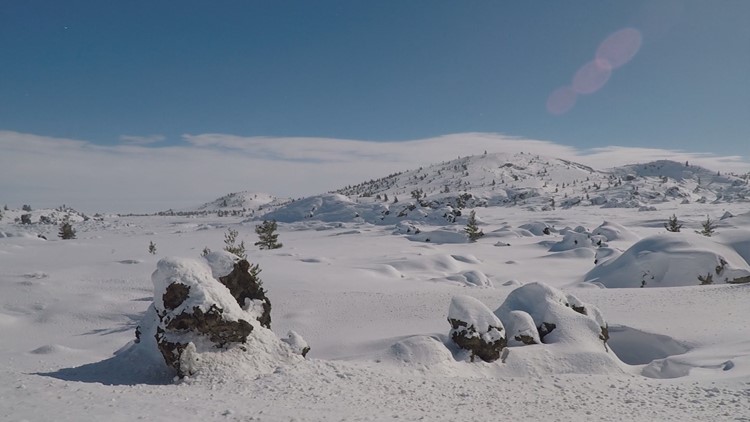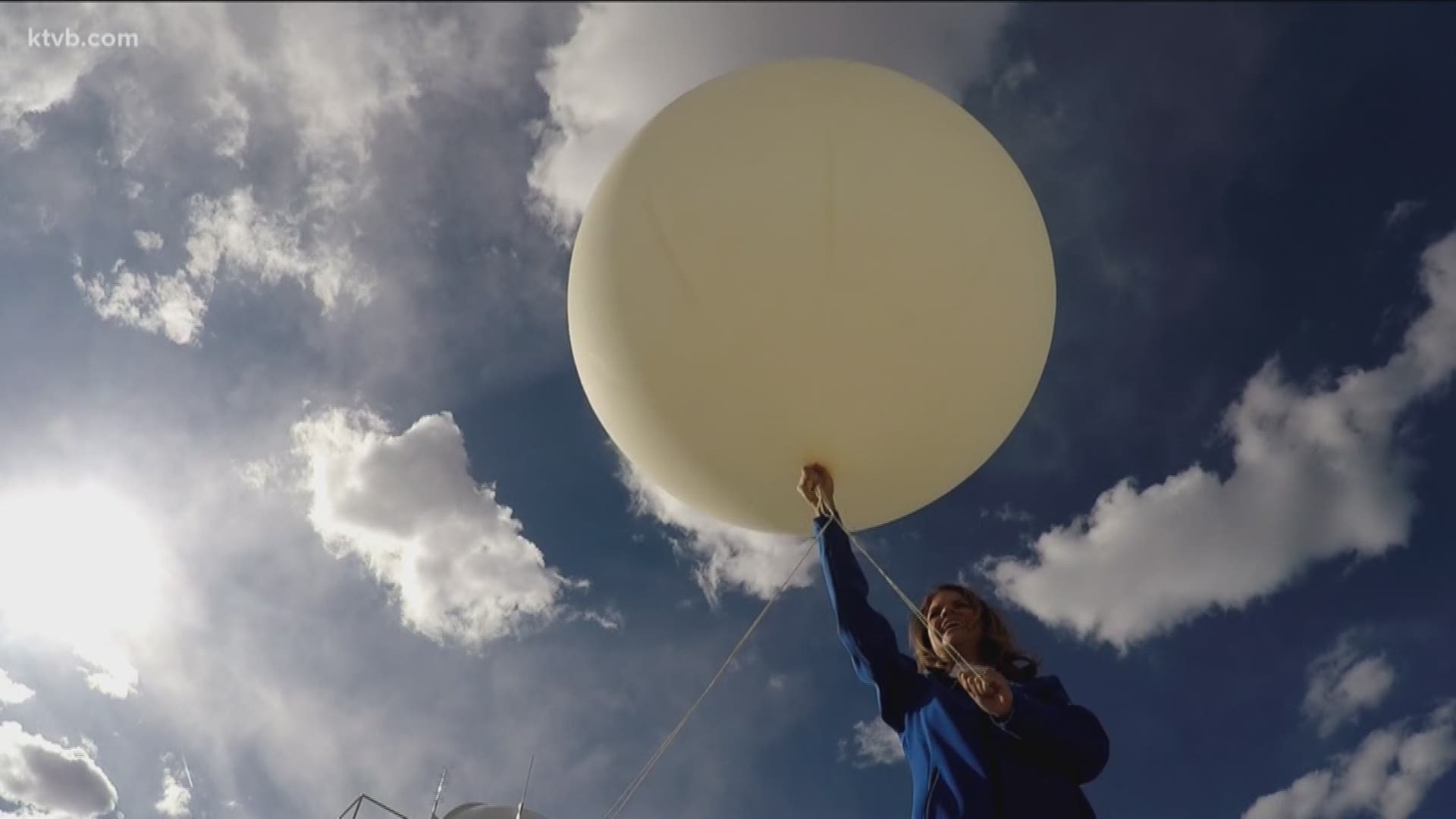BOISE, Idaho — It's still the last week of August, and all of the weather talk around the water cooler today is about the Old Farmers' Almanac forecast for winter 2019-2020. The headlines read, "Brace yourselves!" and "Buckle up!" The forecast claims this coming winter "will be filled with so many ups and downs on the thermometer, it may remind you of a 'Polar Coaster.'"
Don't worry, "polar coaster" is not a meteorological term. Let's just get that part out of the way right now. But do "brace yourselves" to hear that sort of hyperbole thrown around a lot this winter, like snowballs on the playground.
While we try to soak up the final days of summer and prepare for a new season ahead -- FALL -- we're being presented with a type of a "winter anxiety." Let's just be in the here and now, on this day when Starbucks' release of the Pumpkin Spice Latte is invoking every witty "too soon" meme on the internet. I'll even own up to scoffing at Halloween decorations and candy already donning store shelves.
Here we sit, with many of the public swimming pools still open, splash pads still flowing and Treasure Valley temperatures expected to be around 100 degrees Wednesday. Instead of planning to float the Boise River this Labor Day weekend, let's just leap-frog ahead a full season and talk about a COLD and SNOWY winter, shall we?
Here's the forecast from the Old Farmer's Almanac that has many in a "polar coaster" panic today. Read through the article and you might find a common theme: Winter 2019-2020 will be cold and there will be snow.
I'll summarize the rest of it for you: The worst of it will be east of the Rocky Mountains and up into the Appalachians. There will be at least one memorable storm. here will also be ups and downs in temperatures. In my opinion, it's pretty generalized. Cold and snowy. I also particularly like the line that reads, "the coldest periods in mid- to late December and early January and from late January through the first half of February." That would be pretty typical for winter, wouldn't it?
RELATED: How to customize and navigate the new KTVB app (and sign up for weather alerts)
There are some other things that I would personally like to add to the forecast for the 2019-2020 winter: The days will get shorter as we approach the winter solstice, with the sun going down earlier and coming up later. We'll wear hats and boots, and buy passes for ski/snowboard season. There will also be frustration with road crews treating/not treating snow and ice in time for morning commutes - and many people across the nation will brace for dangerous wind-chill temperatures from time to time. Pretty standard for any winter.
The winter always features cold and snow. Maybe that's why the Almanac boasts an 80% accuracy rate for its forecasts. In my opinion, the forecasts are pretty generalized. The Almanac forecasts are also derived from a super-duper secretive formula that is based on all sorts of factors, including astronomy, tidal action, position of the planet -- and I've even heard it factors in things like animal activity and behavior. But again, it's super secret, so I cannot confirm this. Either way, here is that generalized forecast in picture form (from www.farmersalmanac.com):

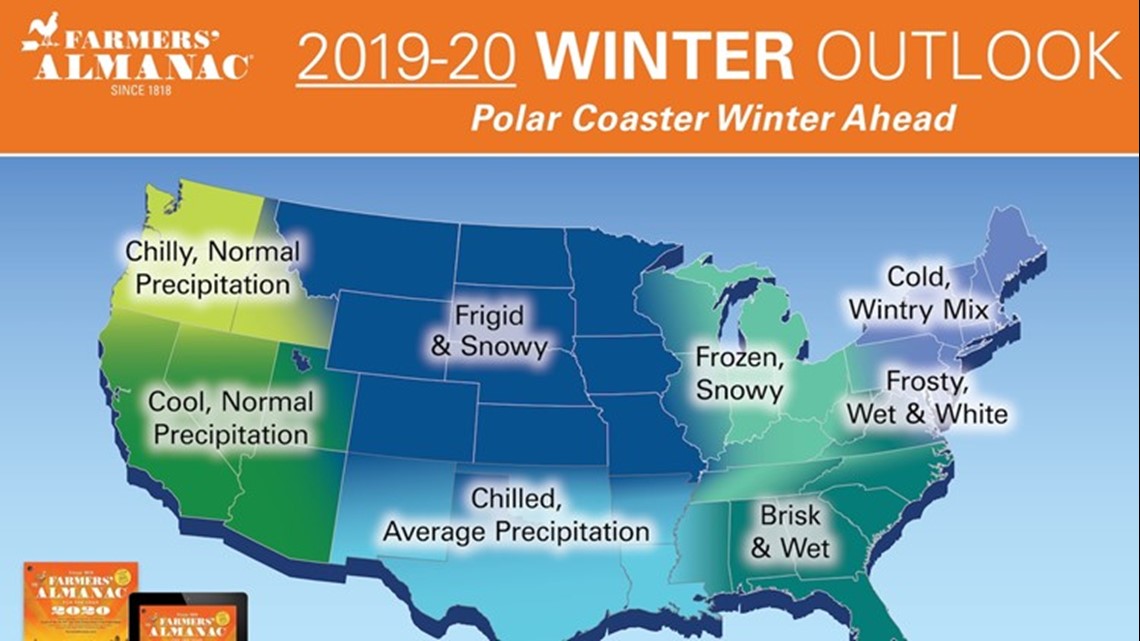
Taking a closer look into southwest Idaho, we're in the section labeled "Chilly, Normal Precipitation." Just FYI, normal snowfall for Boise is around 19" each year.
Then there's this graphic, which is also apparently the winter 2019-2020 outlook from the Old Farmer's Almanac (www.almanac.com):

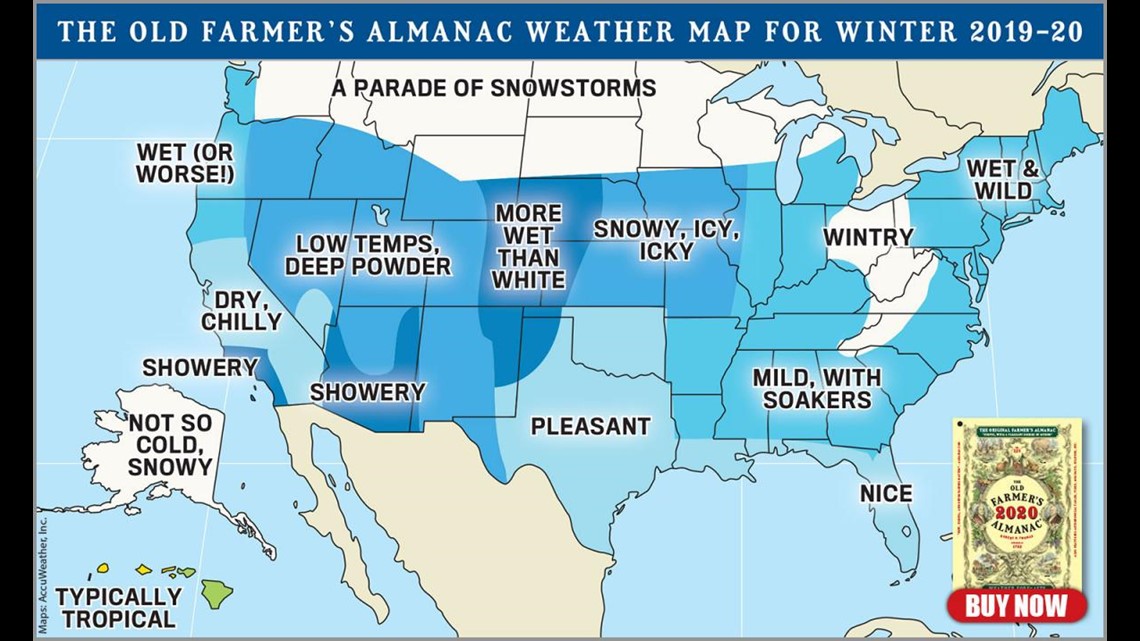
Apparently there are TWO "reliable forecasts" that you can find. One is the "Old Farmer's Almanac" and the other is the "Old Farmers' Almanac." Which is which and which is the correct one? Feel free to pick your poison, but both forecasts call for COLD and SNOW.
Here's another link to an Alamanc forecast that's more specific for SW Idaho: https://www.almanac.com/weather/longrange/ID/Boise#
While everyone is abuzz about this intense blast of "winter worry" before meteorological summer has wrapped, meteorologists are responding to the Almanc's forecast on social media. Meteorologist Brad Panovich (NBC Charlotte) put his own forecast together:
Meteorologist Mark Baden (Milwaukee) posted this to Twitter (note the "#thisissarcasm"):
Where does this leave us? What is the forecast? Well, when it comes to forecasts, you get better accuracy the closer the timeline is. That's why we give a 7 day forecast. Even then, 7 days out, the forecast can change. We've seen it happen many, many times. So, to talk about a season that's still 3 months away... is more or less a guessing game.
How far into the future can a forecast go and still be accurate? The farther out we go in time, the less details we'll be able to provide, the more generalized a forecast will become. Forecast models rely on getting information about what the weather is doing RIGHT NOW to predict what the weather will be like in the future. So, if we want to go out into the next season... or the next season... you will be predicting the future off of future predictions that have already been made. At that point, we can look at what's happening now and teleconnections (what's happening globally) and look at history and analogs... but it's STILL a guessing game.
Here's the 2019-2020 (Dec, Jan, Feb) forecast from the Climate Prediction Center:

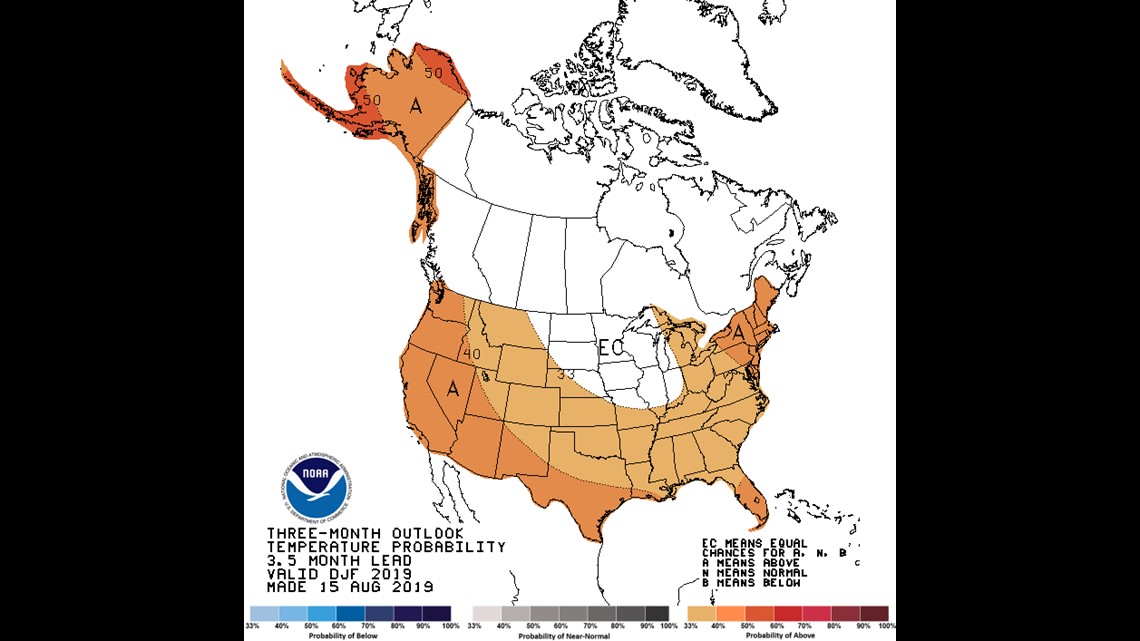
What these two graphics above and below are forecasting is around a 40% chance of above normal temperatures for southwest Idaho, as well as equal chances of above normal or below normal precip for the months of December, January and February (meteorological winter).

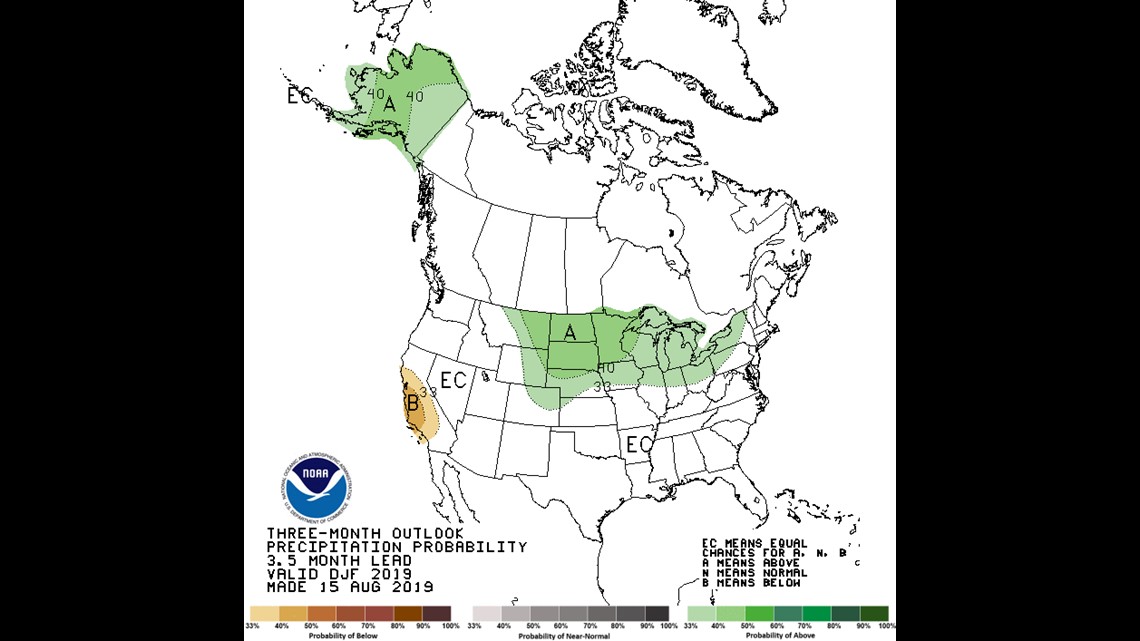
"But why can't you tell me, Bri Eggers, how many inches of snow we can prepare to shovel this winter?" Well, it's still August. We'll get a better idea as we move into fall. I'll tell you now, plan for a HOT week ahead. Temps will be around 5-10 degrees above normal through the coming weekend, and we'll be putting off ordering that pumpkin spice latte for a couple more weeks. As far as winter goes? Plan for cold temperatures and snow... So I guess you can "brace yourselves" and "buckle up," but while we're still enjoying the final days of summer, my advice is to "stay tuned..."
And remember, there are people out there that rely on a groundhog to give us a forecast, and his accuracy rate is somewhere around 39%. In my personal opinion, a generalized seasonal forecast like the one we've been seeing plastered everywhere on the internet today is about as accurate as a horoscope is; if you believe it, it will come to fruition.


